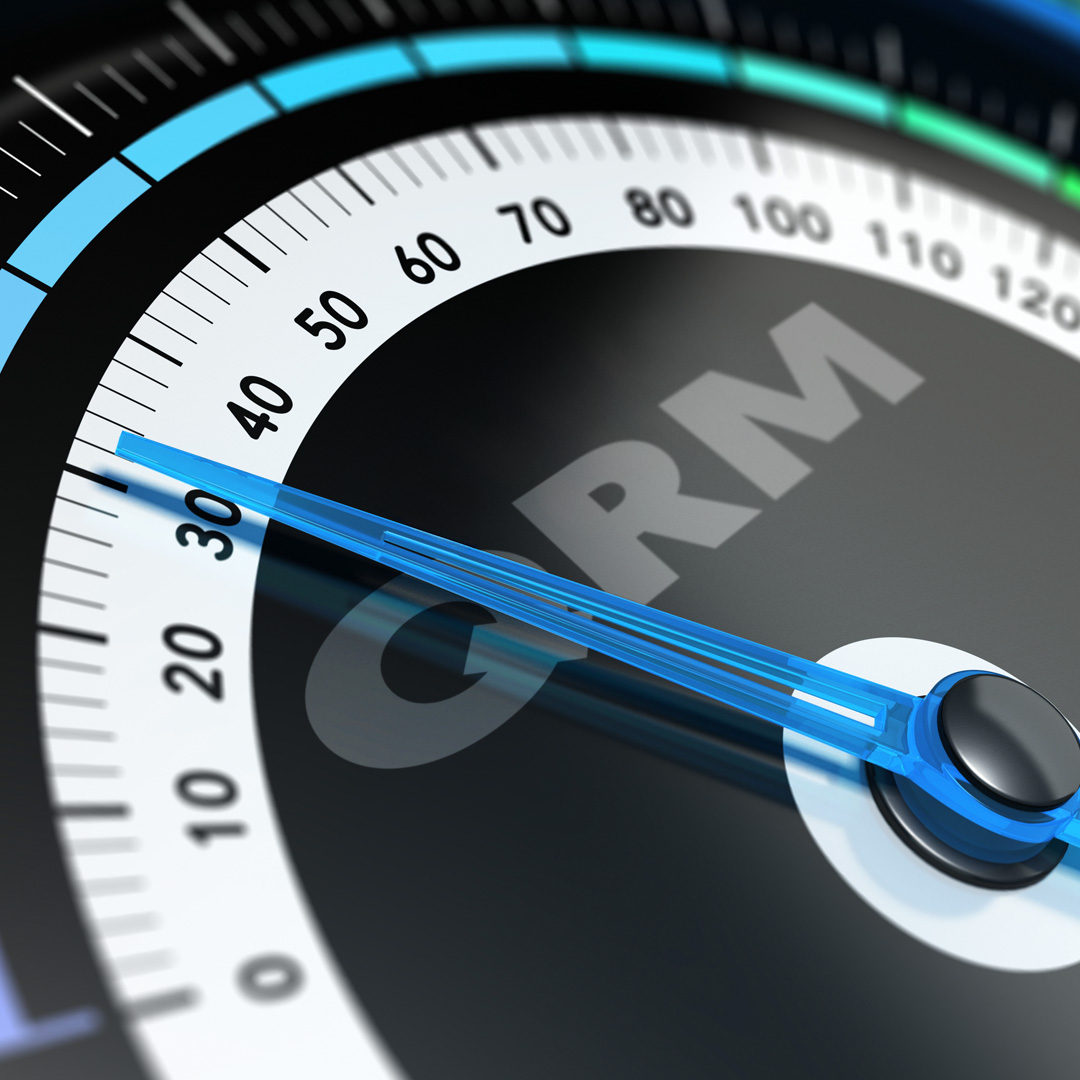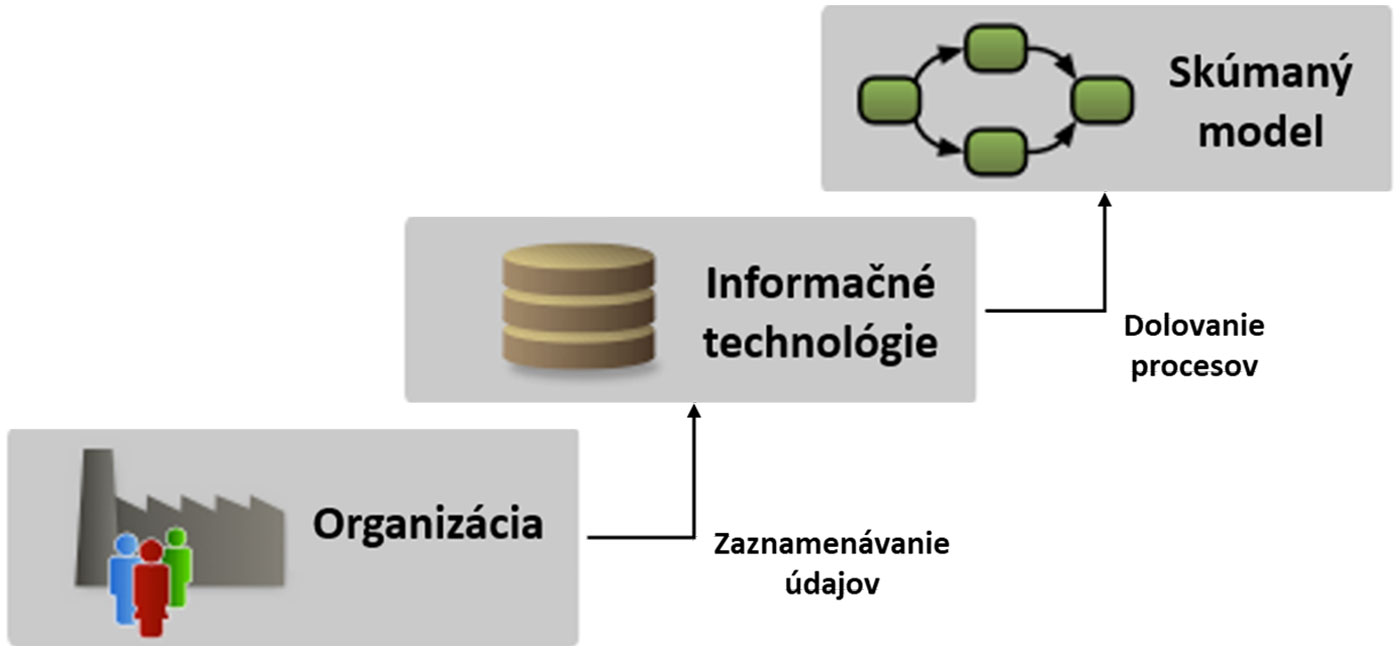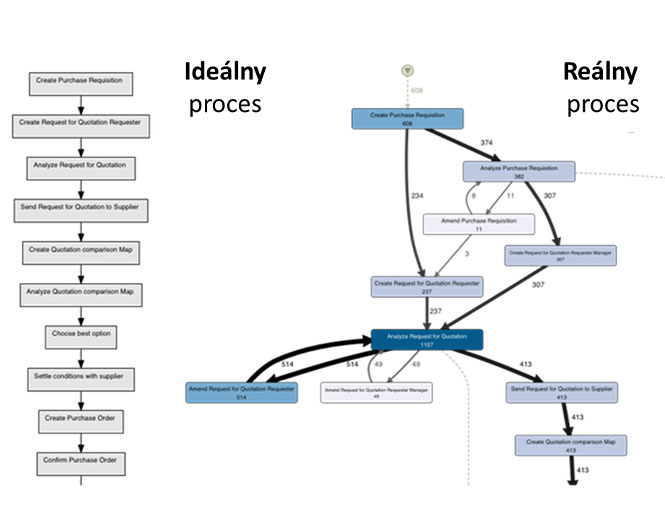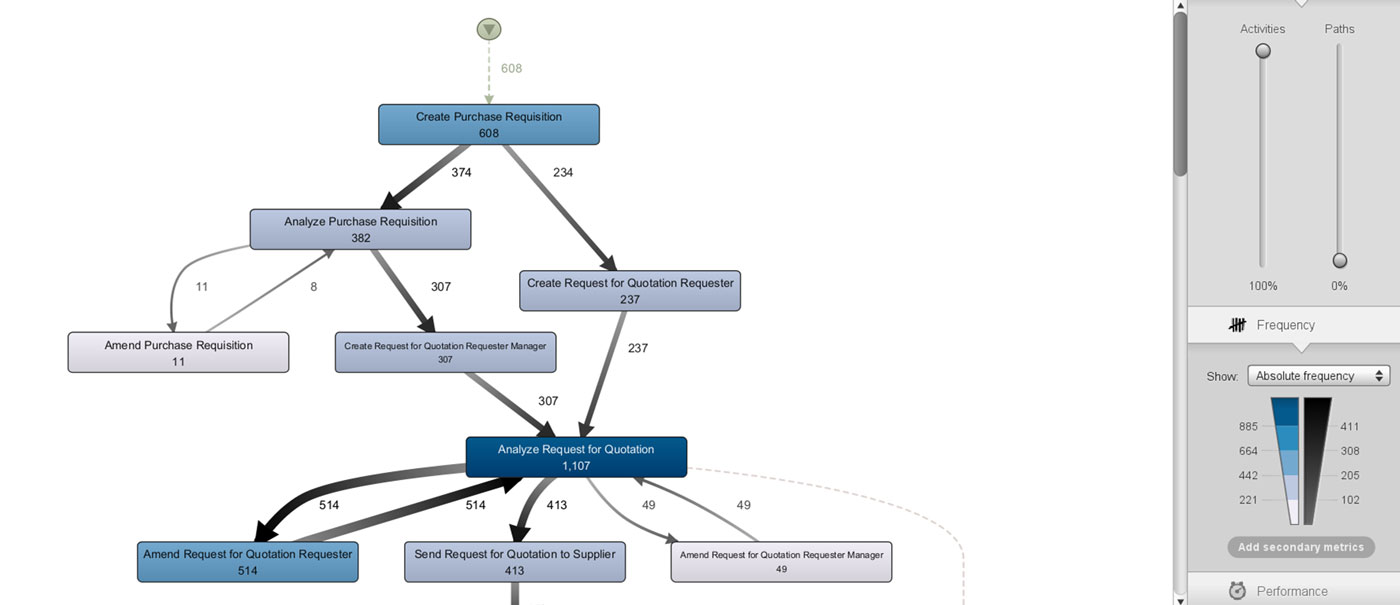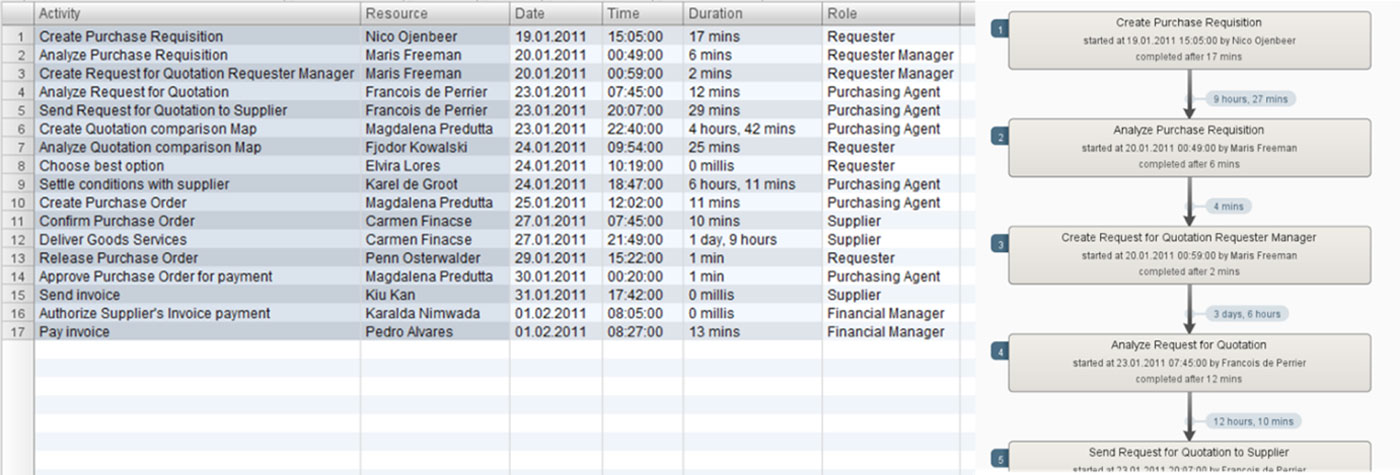QRM: Process Mining
The focus of Quick Response Manufacturing (“QRM”) lies in optimising time in production, whereas Process Mining deals with the analysis and visualisation of existing processes based on data.
Twiserion Design Manager is an excellent tool for creating a digital twin which can successfully integrate both these concepts. With Twiserion Design Manager, you can create a digital model of your production processes and then use Process Mining methods to analyse this model. This enables us to identify potential areas for improvement in company processes based on real data and QRM principles.
Challenges for companies today
In today’s overwhelming business world, cooperation with strategic partners and an effective management of the supply chain are a must. In order to succeed in this dynamic environment, it’s essential to have the right tools up your sleeve, and planning production and intracompany processes are one of the key factors. This process ensures the smooth and prompt course of production which allows commercial targets to be achieved.
We encounter various trends which we cannot ignore. Consumers are more and more demanding; technology is under constant development and the competition never sleeps. In this environment, it’s essential to be ahead and to offer products adapted to the customers’ individual needs, as quickly as possible. Companies which are able to react to this challenge enjoy increased profits and market growth. A quick reaction and elimination of wasted resources, such as excess stocks and excessively high costs, are the key to success in this demanding competitive environment.
Global trends for a successful company
When creating new corporate technologies and strategies, it’s critical to have your finger on the pulse of global and local trends. This is a key step on the path to implementing changes which bring maximum advantages and competitiveness. We will look at three current global trends which players in the field of corporate agility, specifically within our agile strategy entitled QRM, will need to bear in mind.
In the first instance, the growth of small and medium-sized companies is a global trend. These companies have a unique ability to adapt to changing market conditions. Instead of mass production, they produce small batches of various products, thus ensuring flexibility and the ability to better meet the needs of different customers. Unlike large corporations which can be slow to react, small and medium-sized businesses have inbuilt agility and the capacity for continuous improvement.
The second significant trend is an emphasis on local production, which was incredibly important during the COVID-19 pandemic. Industrial sectors such as the automotive and electrotechnical industries – dependent on international supply chains – were forced to move their production closer to home. Local production provides not only short-term advantages in terms of rapid reactions to changes, as well as long-term savings resulting from decreased rinks associated with international transport and quality issues.
The third significant global trend is the growing demand for a wide range of products. Customers expect more variations and a higher quality than at any time in the past. This is why the ability to react quickly to their changing demands is key, not only in production but also in administration. Modern production is no longer about automation, but about the effective management of time and processes.
These global trends have one common denominator: time. Speed is the key to success, and this is reflected exactly in our QRM agile strategy, where time is the first stone on our path. Knowing how to use it to the maximum is the essence of the success we have set out for ourselves.
What is QRM?
Quick Response Manufacturing is a strategic approach which aims to reduce time frames in all aspects of business. QRM monitors and effectively reduces time frames in internal and external operations. For customers, this means a rapid reaction to their demands.
The external part of QRM focuses on how to react quickly and effectively to customer needs. The internal part of QRM deals with reducing time frames in all company processes. This can include, for example, aspects which are invisible internally, such as speeding up the approval and implementation of design changes or processing supplier orders more quickly.
Applying QRM to reduce internal time frames also leads to an increased quality, lower costs and, naturally, a quicker reaction to customer demands. It is a strategy which enables optimal results to be achieved in a world of rapidly changing demands and market trends.
Mining process data
In our QRM strategy, our goal is to reduce significantly lead times, either in production, administration or complex processes throughout the whole company. The key to this is a thorough understanding of the values flow in the company. Until now, we relied on traditional methods which included monitoring time data, analysing production documents and complicated processes such as Value Stream Mapping (VSM) or Manufacturing Critical-path Time (MCT).
However, today we have modern tools available which make this process much simpler and more effective. These tools enable us to obtain quickly and effectively process data using a method known as Process Mining.
Process Mining
Process Mining is a new and innovative approach which isn’t yet well known. It deals with the visualisation and analysis of processes based on recorded events which often take place within the company’s sources of information. During the production process, data is recorded in work stations at every step, giving us a clear image of how the processes occur and how long they take.
The advantage of process mining is that it can be used in cases where there is no official description of the process, or existing documentation is imprecise. These methods enable us to perform an audit of the production management system and materials flows, to analyse transaction records from the ERP system and to study electronic records on materials, semi-finished materials and goods.
Process mining isn’t just a type of data science, but represents a link between data science and process management. It helps transform records of events into meaningful representations of processes, thus opening the way to increased effectiveness and improved business operations.
Using data to understand processes
When looking for effective methods of understanding and optimising corporate processes, we sometimes need to look at the data stored by information systems. This data is not just an ordinary diary, but rather the modern equivalent of diary entries or production dispatches. Mining process data is often the first attempt at truly describing data in a structured manner.
Using the example of the SAP system, we can see that every step of the purchasing process is carefully documented in the relevant databases. CRM systems, and even other information systems such as ERP, store historical process data in the same way.
A systematic analysis of these digital protocols using process mining tools opens the door to huge potential for all organisations with complicated and varied processes. By analysing events and their time stamps, we can reconstruct exactly the actual course of processes and identify areas which can be improved.
In addition, information from these IT protocols can be used to create models of processes which can further be added to by process metrics such as duration and waiting times. This whole process helps better understand the processes and moves the company towards a more effective and competitive future.
The process map provides clear understanding of how the specific process takes place, but that’s not everything. Using statistical data, we can obtain further details and metrics on the performance of this process. This data enables us to categories items using various criteria, including identification numbers and time stamps. In addition, we have detailed statistics available on orders, the movement of material and the performance of the process.
Our statistics are displayed in several different views:
- Global statistics: offering clear information on the overall set of data, individual cases and variants.
- Statistics of sources: offering information on people or organisational units within the total set of data.
- Statistics of attributes: focusing on all further attributes in the data.
These statistics also include important times which help the time analysis within the QRM concept. For example, when examining the life cycle of one of many orders, we have detailed data available on the performance times in individual departments. This time data is an intrinsic part of the first pillar of QRM entitled “Power of Time”.
By using this exit data, we gain valuable information which helps improve processes and moves the company towards an efficient future.
Optimising processes with QRM and Process Mining
One of the main principles which QRM brings us is the reduction in lead times. This process makes the performance of specific tasks faster. An emphasis on the fast and effective performance of processes is the main goal of the Process Mining method. This approach gives us tools for defining and analysing these processes and their time demands.
For industrial engineers, it’s a revolutionary way of obtaining important information about processes. They don’t need to lose time manually monitoring activities in various departments or waiting for the correct data. All they need to do is obtain the required data from the database systems and using Process Mining tools they can process even a large quantity of data. With this data, they can define with greater precision all the key parameters of lead times and identify areas of wastage. In an ideal example, a constant state of resources and values will be ensured; the volatility or variability of processes in the company will be normalised. Since there are many orders, for example even between individual departments, this means that someone is waiting for a long time for their order to be processed, thus burdening and interrupting the smooth process.
If production is subject to seasonal changes, it’s important for the company to adapt to the fluctuation of demand and the capacity needs required by the market. Using QRM and Process Mining can also be a strategic tool for achieving this flexibility and effectivity in the competitive world of business.
